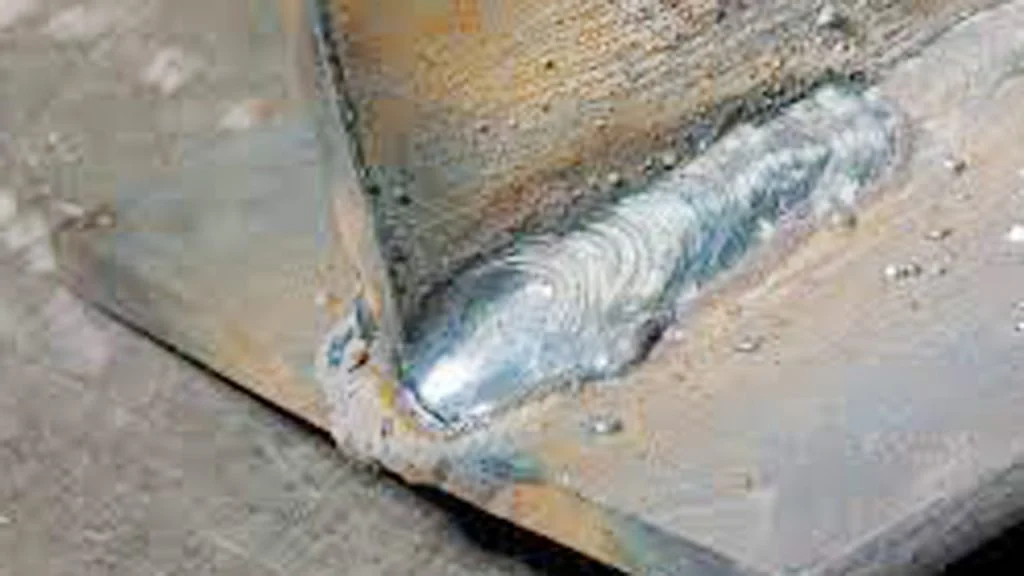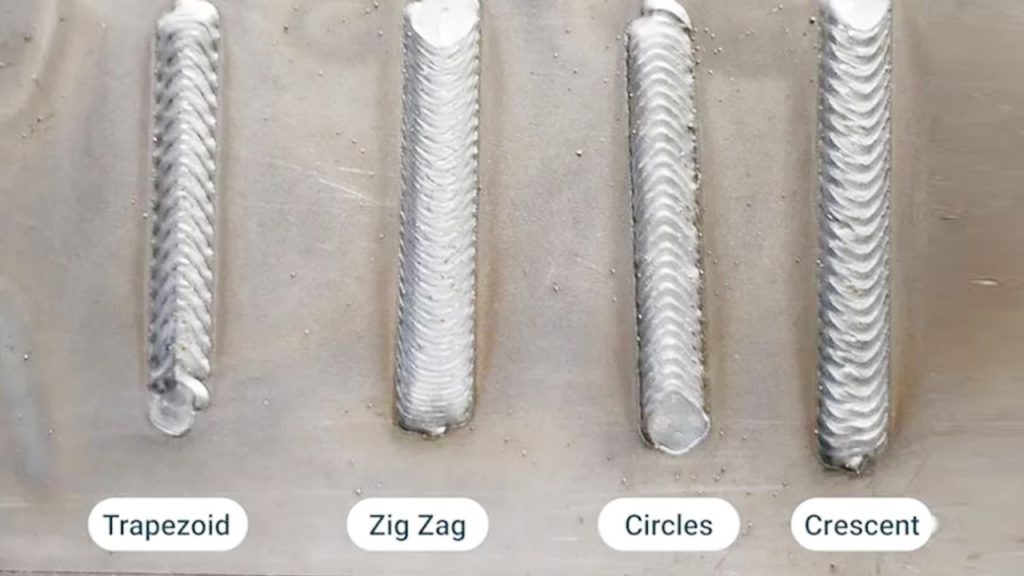Welding oxygen and medical oxygen serve different purposes. They are not interchangeable.
Welding oxygen is used in industrial applications. It helps in cutting, brazing, and welding metals. Medical oxygen, on the other hand, is crucial for human health. It supports patients with breathing issues. Understanding the differences between these two types of oxygen is essential.
It ensures safety and effectiveness in their respective uses. In this post, we will explore the key differences. We will look at their applications, purity levels, and safety concerns. This information will help you use each type correctly. Stay with us to learn more about welding and medical oxygen.

Credit: www.youtube.com
Types Of Oxygen
Oxygen plays a crucial role in various fields. It supports life and aids in many industrial processes. However, not all oxygen is the same. Different types are used for different purposes.
Welding Oxygen
Welding oxygen is used in industrial settings. It helps in cutting and welding metals. This type of oxygen is produced under strict controls. It ensures the gas is free from impurities. Contaminants in the gas can affect the welding process. This type of oxygen is not suitable for breathing.
Medical Oxygen
Medical oxygen is used to treat patients. It must meet high purity standards. This ensures it is safe to breathe. Medical oxygen is produced in a clean environment. It is free from pollutants and toxins. Doctors use it to help patients with breathing problems. It supports life in hospitals and clinics.
Purity Levels
Purity levels are crucial in distinguishing welding oxygen from medical oxygen. The intended usage determines the required purity. Each has different standards to ensure safety and effectiveness. Understanding these differences helps in choosing the right type for specific needs.
Industrial Standards
Welding oxygen must meet industrial standards. These standards ensure it is suitable for metalwork. The purity level of welding oxygen is usually around 99.2%. This level is sufficient for cutting and welding tasks. Impurities can be present but within acceptable limits. These impurities do not affect the welding process significantly.
Medical Standards
Medical oxygen requires higher purity standards. This oxygen is used for breathing and patient care. The purity level must be at least 99.5%. Even a slight contamination can be harmful. Medical oxygen is strictly regulated and tested. It must be free from any contaminants. This ensures patient safety and health.
Production Process
The production process of oxygen determines its quality and purity. Both welding oxygen and medical oxygen serve different purposes. This difference originates from their distinct production methods.
Industrial Production
Welding oxygen, also known as industrial oxygen, undergoes a basic filtration process. It is produced using air separation techniques like cryogenic distillation. This method separates oxygen from other atmospheric gases.
Once separated, the oxygen is compressed and stored in tanks. The purity level of industrial oxygen is lower. It contains more impurities compared to medical oxygen.
Industrial oxygen is suitable for cutting, welding, and other industrial applications. It does not need to meet strict health standards.
Medical Production
Medical oxygen requires a more refined production process. It starts with the same air separation techniques. However, it undergoes additional filtration and purification steps.
These steps ensure the removal of any harmful contaminants. Medical oxygen must meet rigorous health and safety standards. It is produced to achieve a high purity level, usually above 99.5%.
After production, medical oxygen is stored in specially designed containers. These containers maintain the oxygen’s purity and prevent contamination. Medical oxygen is vital for patient care and life support systems.
Contaminant Control
Contaminant control is crucial in distinguishing welding oxygen from medical oxygen. Welding and medical uses have different purity requirements. Each industry has specific guidelines to ensure safety and effectiveness. Understanding these differences can help in choosing the right type of oxygen.
Industrial Contaminants
Welding oxygen must be free from impurities that can affect weld quality. Common contaminants include dust, oil, and moisture. These contaminants can weaken welds and cause defects. Welding oxygen is not required to meet the stringent purity levels of medical oxygen. However, it must be clean enough to prevent interference during welding.
The presence of industrial contaminants can be hazardous. In welding, impurities can cause instability and lead to accidents. The standards for welding oxygen focus on preventing such risks. This ensures a safer working environment and better weld quality.
Medical Contaminants
Medical oxygen requires a higher purity level because it is used for breathing. It must be free from harmful contaminants. Common impurities in medical oxygen include bacteria, viruses, and chemical toxins. These can pose serious health risks to patients. Medical oxygen is subject to strict regulations and testing.
Ensuring contaminant-free medical oxygen is essential for patient safety. Even small amounts of impurities can cause severe health issues. Medical facilities rely on clean oxygen for various treatments. This includes surgeries and respiratory therapies. The focus is on maintaining the highest purity standards to ensure patient well-being.
Storage And Handling
Understanding the differences in the storage and handling of welding oxygen and medical oxygen is crucial. Each type of oxygen has specific protocols to ensure safety and efficacy. Let’s explore these practices in detail.
Industrial Practices
Welding oxygen is stored in high-pressure cylinders. These cylinders are usually made of steel or aluminum. They are designed to withstand high pressures. The storage area must be well-ventilated. It should also be free from flammable materials. Handling welding oxygen requires caution. Workers should use protective gear. This includes gloves and safety glasses. Regular inspections of the cylinders are mandatory. This helps to prevent leaks and ensure safety.
Medical Practices
Medical oxygen is stored in specialized cylinders. These cylinders are often color-coded. This helps to distinguish them from other gases. The storage area must be clean and free from contaminants. It should also be temperature-controlled. Handling medical oxygen demands strict hygiene. Technicians should wear clean gloves. They must also use sanitized equipment. Regular maintenance of the cylinders is essential. This ensures the oxygen remains pure and safe for patients.
Usage Applications
Understanding the different usage applications for welding oxygen and medical oxygen is crucial. Both types serve specific purposes in their respective fields. Knowing these applications can help you use the right type of oxygen for your needs.
Industrial Uses
Welding oxygen is a staple in industries. It supports various metalworking processes. These include welding, cutting, and brazing. High temperatures are needed for these tasks. Welding oxygen helps achieve these temperatures. It ensures clean and efficient cuts. This oxygen also supports combustion in furnaces. It’s often used in glass and ceramic manufacturing.
Medical Uses
Medical oxygen has a different role. It’s used in healthcare settings. Medical professionals use it to treat patients. It helps in respiratory therapies. Patients with breathing difficulties benefit from it. It is also used during surgeries. Medical oxygen ensures oxygen supply to tissues. It is essential in emergency medicine. Ambulances and hospitals rely on it. It helps save lives.
Safety Considerations
When it comes to handling oxygen, safety is paramount. Whether you’re working in an industrial setting or a medical environment, understanding the distinct safety considerations is crucial. Let’s explore the unique safety requirements for both welding oxygen and medical oxygen.
Industrial Safety
Welding oxygen is used in various industrial applications, such as cutting, welding, and brazing. The safety protocols in these environments are stringent due to the high risks involved. Here are some key points to consider:
- Proper Storage: Industrial oxygen cylinders should be stored in a well-ventilated area, away from flammable materials. They should be secured upright to prevent tipping.
- Handling with Care: Always use appropriate tools when opening or closing oxygen valves. Rough handling can cause leaks, leading to dangerous situations.
- Personal Protective Equipment (PPE): Wearing gloves, goggles, and protective clothing is essential to prevent injuries from sparks, heat, and potential explosions.
- Training and Awareness: Workers should be trained in the proper use of oxygen equipment and emergency procedures. Regular safety drills can help ensure everyone knows what to do in case of an accident.
Medical Safety
Medical oxygen, on the other hand, is used for life-saving purposes in hospitals, clinics, and at home. The safety measures for medical oxygen are equally critical, but they focus more on the purity and proper administration of the gas. Let’s take a closer look:
- Purity Standards: Medical oxygen must meet high purity standards (usually 99.5% or higher) to ensure it is safe for patient use. Contaminants can be harmful or even fatal.
- Clean Equipment: All equipment used to administer medical oxygen, such as masks, tubes, and regulators, must be sterilized to prevent infections.
- Proper Dosage: Administering the correct dosage is crucial. Too much or too little oxygen can cause complications. Healthcare providers must monitor patients closely.
- Emergency Preparedness: Medical staff should be trained to handle emergencies, including dealing with oxygen leaks or equipment failures. Quick access to backup supplies is essential.
In both industrial and medical settings, the importance of safety cannot be overstated. By adhering to these guidelines, we can ensure that oxygen is used effectively and safely, protecting both workers and patients alike. Have you ever had an experience where safety measures saved the day? Share your story in the comments below!

Credit: aopl.net.in
Regulatory Requirements
Regulatory requirements for welding oxygen and medical oxygen differ significantly. These differences ensure safe and effective use in their respective fields. Both types of oxygen undergo strict regulations, but for different reasons and standards.
Industrial Regulations
Welding oxygen falls under industrial regulations. These standards focus on the safe handling and usage in manufacturing processes. The American Welding Society (AWS) sets guidelines for purity and quality.
The Occupational Safety and Health Administration (OSHA) also plays a role. OSHA ensures that the oxygen used in welding does not pose health risks to workers. They oversee the storage and distribution of welding oxygen as well.
Medical Regulations
Medical oxygen is regulated by health authorities. The Food and Drug Administration (FDA) oversees these regulations in the United States. Medical oxygen must meet strict purity standards to be safe for human use.
The FDA requires rigorous testing and certification processes. These processes ensure that medical oxygen is free from contaminants. Medical facilities must follow these regulations to protect patient health.

Credit: aopl.net.in
Frequently Asked Questions
What’s The Difference Between Medical Grade Oxygen And Welding Oxygen?
Medical grade oxygen is 99. 5% pure and strictly regulated for patient safety. Welding oxygen is 99. 2% pure and lacks stringent purity standards.
What’s The Difference Between Medical Oxygen And Aviator’s Breathing Oxygen?
Medical oxygen is used for patient care and must be extremely pure. Aviator’s breathing oxygen is used in aviation, with added moisture to prevent dryness at high altitudes.
What Is Welding Oxygen?
Welding oxygen is high-purity oxygen used in welding and cutting processes. It enhances flame temperatures, enabling efficient metal fusion and cutting.
Is Welding Oxygen The Same As Aviation Oxygen?
No, welding oxygen is not the same as aviation oxygen. Welding oxygen has lower purity standards. Aviation oxygen meets strict purity and moisture-free requirements for safe breathing at high altitudes.
Conclusion
Understanding the difference between welding oxygen and medical oxygen is crucial. Each type serves distinct purposes. Welding oxygen supports industrial applications, ensuring efficient and safe operations. Medical oxygen, on the other hand, is vital for patient care, providing life-saving support.
Always use the correct type for the intended task. Incorrect usage can lead to serious consequences. Stay informed and prioritize safety. Knowledge about these differences helps make better decisions. So, next time you encounter oxygen types, remember their unique roles.
Safety and proper usage go hand in hand.

